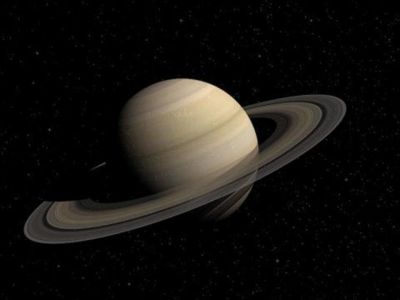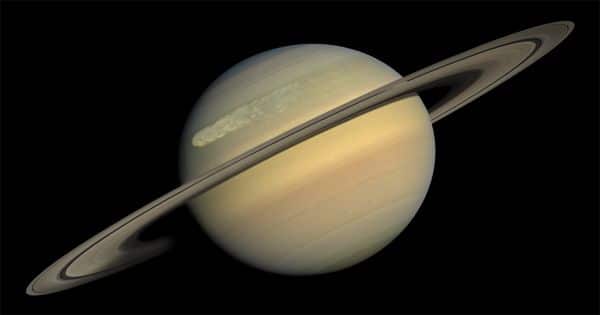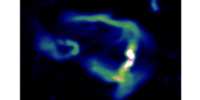Saturn, the second-largest planet in the solar system, has a total of 82 moons. While there are a number of moons, more than 96 percent of the mass in orbit around the earth resides in one moon in particular: Titan. The other six “ellipsoidal” moons make up about 4 percent of the mass. However, Saturn itself has a mass of more than 4000x all its moons combined.
Scientists have demonstrated that the impact of Saturn’s satellites can explain the inclination of the gas giant’s rotation axis. Their analysis also forecasts that the tilt will rise even further in the next few billion years.
Saturn is tilted with respect to its orbit around the Sun, by a little bit more than Earth is. Saturn circles the sun on a 27-degree tilt that experts now believe could be caused its moons and especially Titan, the planet’s largest moon.
Around a billion years ago, the moons of the ring planet pulled it into a state of resonance with themselves that continues to this day. The resonance, along with a minor disturbance of Neptune as it passed across the early solar system, culminating in the 27° inclination that we can see on the earth today.
Two scientists from CNRS and Sorbonne University working at the Institute of Celestial Mechanics and Ephemeris Measurement have just shown that the effect of Saturn’s satellites will explain the tilt of the gas giant’s rotation axis. Their work, published in the journal Nature Astronomy on 18 January 2021, also predicts that the tilt will rise much further over the next few billion years.

Much like David and Goliath, it seems that the tilt of Saturn may simply be caused by the stars. This is the conclusion of a recent study by scientists from the CNRS, the University of Sorbonne, and the University of Pisa, which indicates that the present tilt of the rotation axis of Saturn is caused by the movement of its satellites and, in particular, by the migration of its largest moon, Titan.
New measurements have shown that Titan and the other moons are steadily moving away from Saturn, even faster than previously predicted by astronomers. By integrating this accelerated migration rate into their equations, the researchers concluded that this mechanism is influencing the inclination of Saturn’s rotation axis: as its satellites migrate farther out, the earth is moving more and more.
The critical incident that tilted Saturn is believed to have taken place relatively recently. Saturn’s rotation axis remained only slightly tilted for more than three billion years after its foundation. It was only around a billion years ago that the slow motion of the satellites caused a resonance process that persists today: the axis of Saturn interacted with the direction of the planet Neptune and eventually rotated until it reached the inclination of 27° observed today.
These results bring past scenarios into question. Astronomers have already settled on the nature of this resonance. They claimed, though, that it had happened very early, more than four billion years ago, due to a shift in Neptune’s orbit. Saturn’s axis was believed to have been steady since that time. In fact, the axis of Saturn is indeed tilting, and what we see today is merely a transitional stage in this change. Over the next few billion years, the inclination of the Saturn axis could more than double.
The research team has also drawn similar conclusions regarding the planet Jupiter, which is predicted to undergo analogous tilting due to the migration of its four major moons and the resonance of the orbit of Uranus: within the next five billion years, the inclination of the axis of Jupiter could rise from 3° to more than 30°.
Saturn is not the only gas giant in the solar system to get the same drive from the moons. At present, Jupiter is in the process of being tipped by its stars, with some support from Uranus along the way. Five billion years from now, the largest planet in the solar system is predicted to have an axial tilt of 10x what it is now (3°), making it much more pointed than Saturn is now.
















